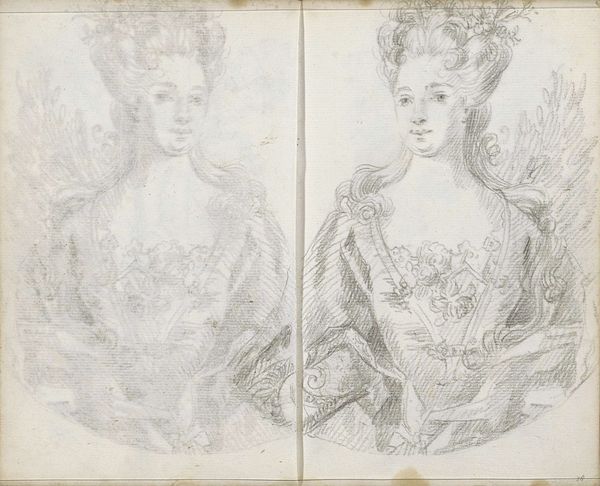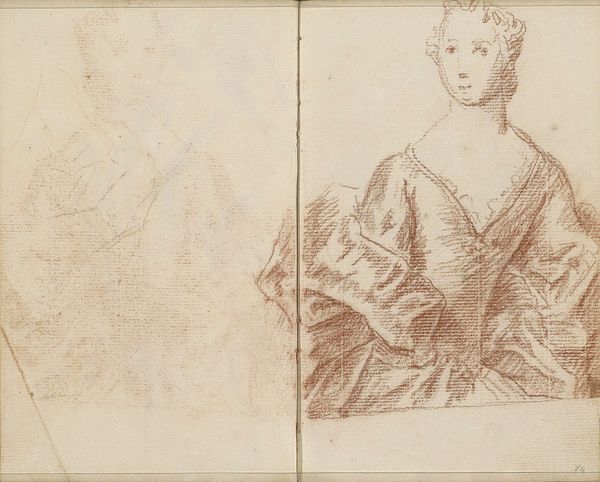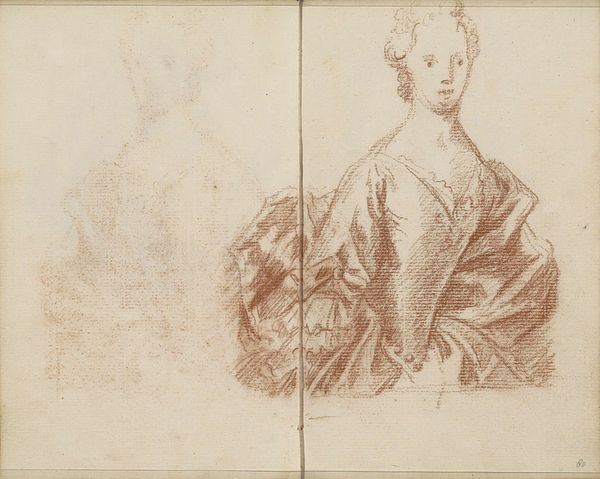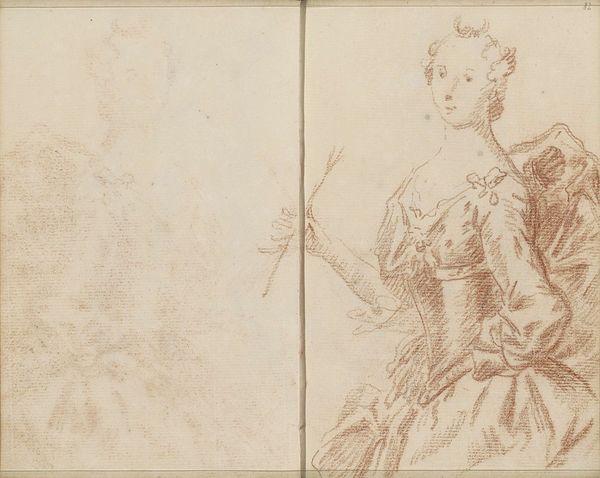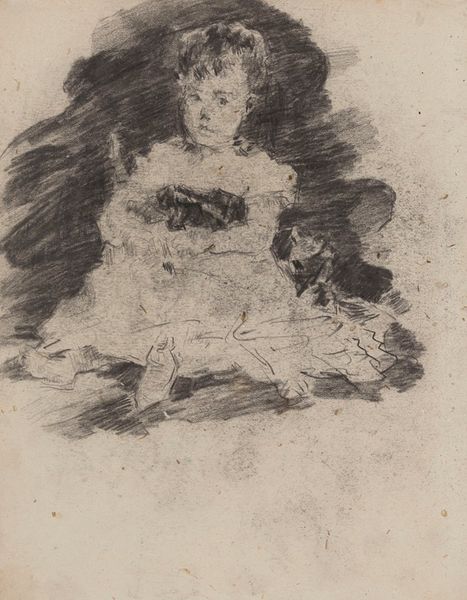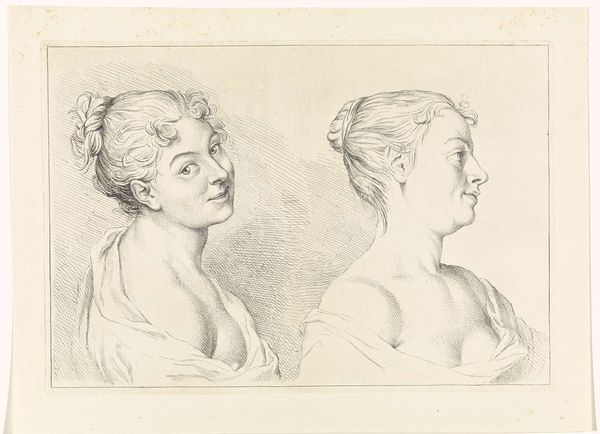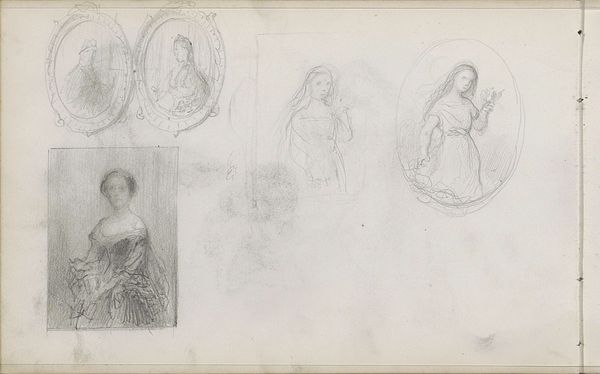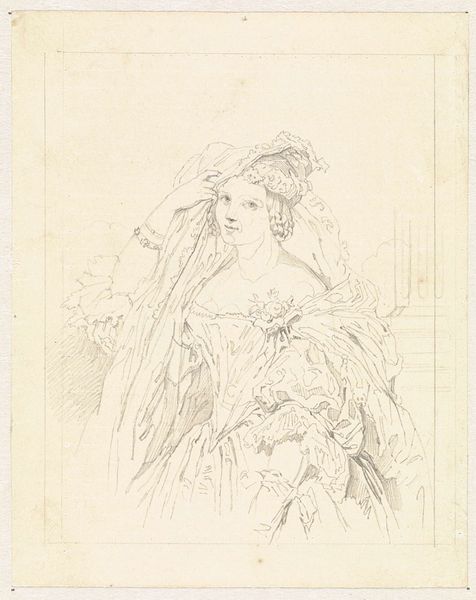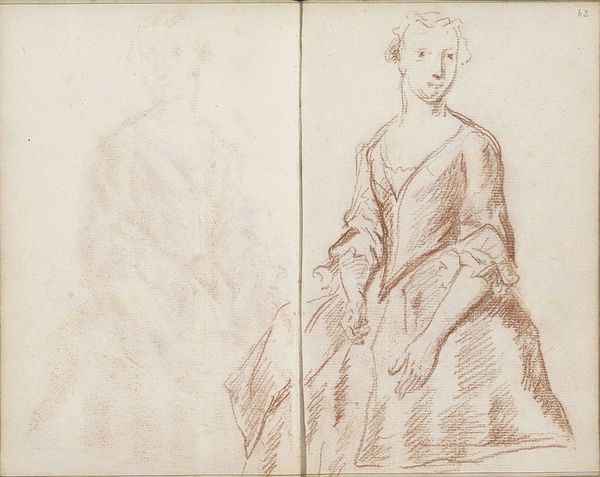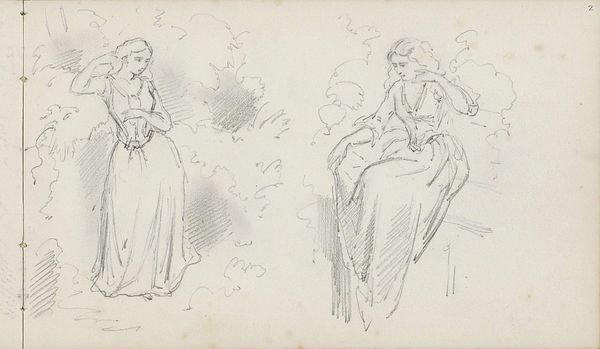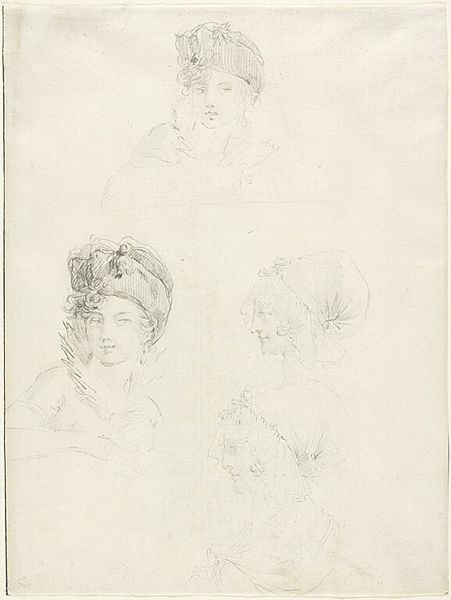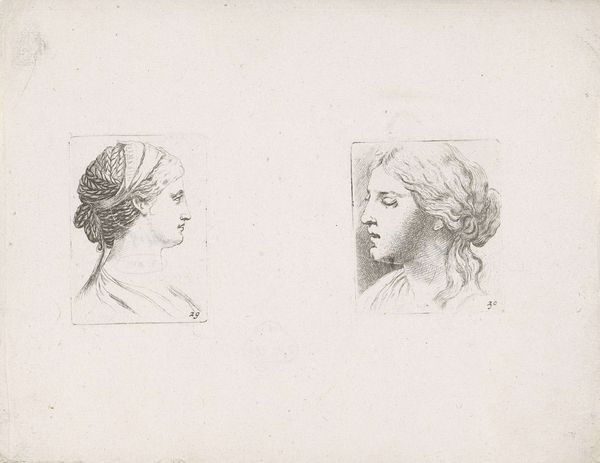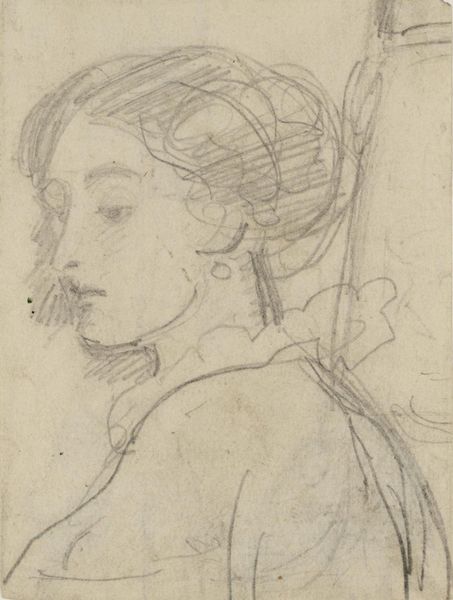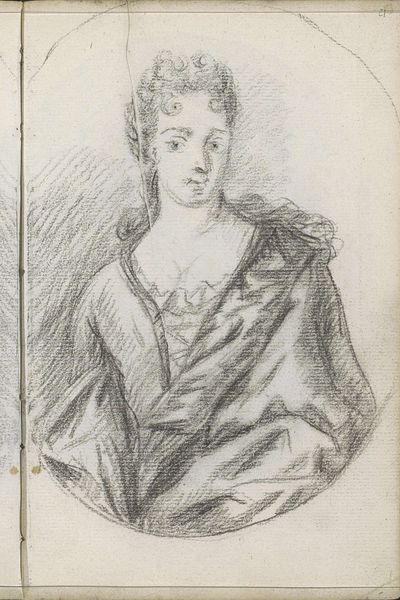
drawing, pencil
#
portrait
#
drawing
#
pen sketch
#
pencil sketch
#
figuration
#
pencil
#
genre-painting
#
academic-art
#
rococo
Copyright: Rijks Museum: Open Domain
Editor: We're looking at "Portret van een vrouw," or "Portrait of a Woman," by Petrus Johannes van Reysschoot, created sometime between 1710 and 1772. It's a pencil drawing, and I'm immediately struck by the contrast between the ethereal, almost ghost-like figure on the left, and the more defined portrait on the right. What do you see in the piece, particularly in terms of its formal composition? Curator: Indeed, the duality presented is compelling. Structurally, the composition operates on a fascinating contrast: the nascent form on the left and its realized counterpart on the right. Note the employment of line, the gradations of tone, moving from vague suggestion to relatively precise contours. How does the artist guide the viewer’s eye through these two distinct registers of representation? Editor: I see what you mean. My eye definitely goes to the sharper lines of the right figure. It's almost like seeing the evolution of a thought process laid bare. What do you make of the empty space in the work, considering the medium is pencil and not oil, or tempera? Curator: The negative space is crucial, isn't it? Pencil, inherently a medium of line, exploits this tension. The whiteness of the page becomes an active element. We see Van Reysschoot orchestrating a spatial dialogue between form and emptiness. Ask yourself: Does the negative space amplify the fragility or perhaps the idealized nature of the sitter, particularly juxtaposed against the material substance implied by the pencil marks? Editor: That makes a lot of sense. I hadn't considered how active the empty space is. I think I appreciate the drawing much more now. Curator: Excellent. Perceiving how an artist uses and transcends their medium's limitations allows us to truly see the work. A good understanding of this art work comes down to understanding how visual tools contribute meaning.
Comments
No comments
Be the first to comment and join the conversation on the ultimate creative platform.
